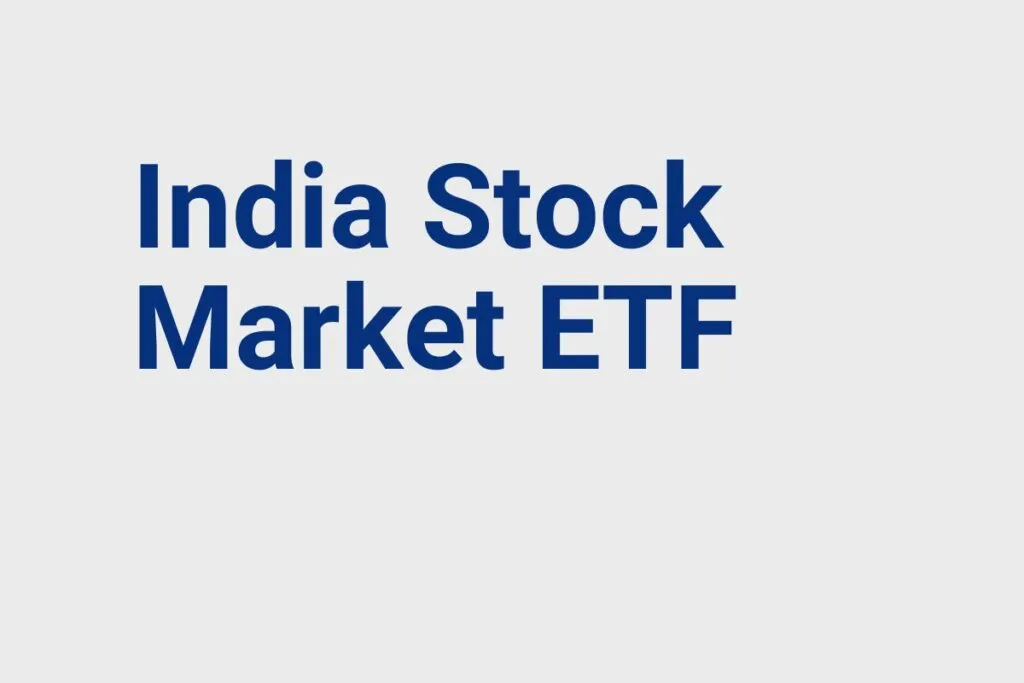India Stock Market ETF : Investing in India’s dynamic stock market through Exchange-Traded Funds (ETFs) offers a compelling opportunity for both seasoned investors and newcomers seeking exposure to this emerging economy. This article provides a comprehensive guide to India Stock Market ETFs, exploring their benefits, top options, key considerations, performance trends, comparisons with other investment vehicles, and associated risks. By delving into the intricacies of India’s ETF landscape, investors can gain valuable insights to make informed decisions and potentially capitalize on the diverse opportunities presented by this vibrant market.
Introduction to India Stock Market ETFs
Definition and Overview of ETFs
Imagine a magical financial potion that combines the diversification of a mutual fund with the simplicity and tradability of a stock. These nifty investment vehicles are like a mixed bag of goodies, containing a diverse range of assets such as stocks, bonds, or commodities.
Understanding the India Stock Market
Welcome to the hustle and bustle of the India Stock Market, where bulls and bears meet for their daily tango. The market in India is a vibrant ecosystem driven by a myriad of factors including economic growth, political events, and global trends. Investing in the Indian stock market can offer a rollercoaster ride of opportunities and risks, making it a thrilling playground for savvy investors.
Benefits of Investing in India Stock Market ETFs
Diversification and Risk Management
Diversification is like having a well-balanced diet – you wouldn’t want to survive on just fries, right? By investing in India Stock Market ETFs, you can spread your risk across multiple companies and sectors, reducing the impact of volatility on your portfolio.
Liquidity and Cost-Efficiency
Picture this: you want to sell your investment quickly, like breaking up with a bad date. India Stock Market ETFs offer liquidity, meaning you can easily buy and sell them on the stock exchange. Plus, with lower expense ratios compared to mutual funds, ETFs won’t be the financial equivalent of a high-maintenance partner.
Top India Stock Market ETFs to Consider
Performance and Track Record
Just like choosing a dance partner, you want an ETF with the right moves. Look for ETFs with a solid track record of performance, ideally mirroring the performance of a relevant stock market index in India.
Key Features and Holdings
Think of an ETF as a box of assorted chocolates – each one comes with its unique features and holdings. Whether you prefer a tech-savvy ETF or one focused on consumer goods, understanding the key features and underlying assets can help you pick the right flavor for your investment appetite.
Factors to Consider Before Investing in India Stock Market ETFs

Market Conditions and Economic Outlook
Before diving headfirst into the world of India Stock Market ETFs, take a moment to scan the horizon. Consider factors like the overall market conditions and the economic outlook for India. Just like checking the weather before a picnic, a little foresight can go a long way in shaping your investment strategy.
Expense Ratios and Management Fees
Nobody likes hidden charges, especially when it comes to their hard-earned money. Keep an eye out for the expense ratios and management fees associated with India Stock Market ETFs. Lower fees mean more of your returns stay in your pocket, rather than lining someone else’s.
Performance and Trends of India Stock Market ETFs
Historical Performance Analysis
When it comes to India Stock Market ETFs, historical performance is like reading the stock market’s diary. Looking back at past performance can give you a glimpse of how these ETFs have behaved in different market conditions. It’s like taking a walk down memory lane to see if these ETFs have weathered storms or danced in the sunshine.
Current Market Trends and Forecasts
Trying to predict the future of the stock market is like trying to predict the weather – sometimes it’s sunny, sometimes it’s stormy, and sometimes it surprises you out of the blue. Current market trends and forecasts can give you an idea of where India Stock Market ETFs might be headed. It’s like looking at the roadmap ahead to see if there are any roadblocks or smooth sailing.
Comparison of India Stock Market ETFs with Other Investment Options
Comparative Analysis with Mutual Funds
Comparing India Stock Market ETFs with mutual funds is like deciding between tea and coffee – they both have their own unique flavors. Understanding how these investment options stack up against each other can help you make an informed decision. It’s like choosing between a cozy afternoon tea or a bold morning coffee.
Risk and Return Comparison with Direct Stock Investing
Comparing the risk and return of India Stock Market ETFs with direct stock investing is like weighing the pros and cons of taking a scenic route versus a shortcut. It’s important to understand the risks and potential returns of each option to decide which path aligns best with your investment goals. It’s like choosing between the thrill of a rollercoaster ride or the calm of a scenic drive.
Risks Associated with Investing in India Stock Market ETFs
Market Volatility and Political Risks
Investing in India Stock Market ETFs comes with its own set of risks, like navigating through a maze with unpredictable twists and turns. Market volatility and political risks can impact the performance of these ETFs, so it’s essential to be aware of the potential bumps along the way. It’s like bracing yourself for a rollercoaster ride that might have unexpected loops.
Currency Fluctuations and Regulatory Risks
Currency fluctuations and regulatory risks are like the hidden obstacles in an adventure course – you might not see them coming, but they can throw you off balance. Investing in India Stock Market ETFs means being prepared for these risks that can influence returns. It’s like packing an umbrella and sunscreen for a day out, ready for whatever weather comes your way.
In conclusion, India Stock Market ETFs present a convenient and efficient way for investors to participate in the growth story of one of the world’s fastest-growing economies. By carefully weighing the benefits, risks, and performance metrics outlined in this guide, individuals can navigate the complexities of the Indian market with greater confidence and strategic insight. Whether seeking diversification, cost-effectiveness, or exposure to specific sectors, India Stock Market ETFs offer a valuable avenue for building a well-rounded investment portfolio with a touch of global flair.
FAQs about India Stock Market ETFs
How do India Stock Market ETFs work?
India Stock Market ETFs, or Exchange-Traded Funds, function similarly to other ETFs. These funds are designed to track the performance of a specific index or sector within the Indian stock market. Investors can buy and sell shares of these ETFs on stock exchanges throughout the trading day, just like individual stocks. The value of an India Stock Market ETF is based on the collective value of the underlying securities it holds, providing investors with diversified exposure to the Indian stock market in a single investment.
Are India Stock Market ETFs suitable for beginner investors?
India Stock Market ETFs can be suitable for beginner investors due to their simplicity and diversification benefits. Unlike investing in individual stocks, which requires thorough research and monitoring, ETFs offer instant diversification across multiple companies within the Indian market. Additionally, ETFs typically have lower expense ratios compared to actively managed mutual funds, making them cost-effective for investors with limited capital. However, beginners should still conduct research and consider their investment goals and risk tolerance before investing in any financial product.
What are the key factors to consider before investing in India Stock Market ETFs?
Before investing in India Stock Market ETFs, investors should consider several factors. Firstly, they should assess the performance and composition of the ETF, including the underlying index it tracks and the companies it holds. Additionally, investors should evaluate the expense ratio and trading liquidity of the ETF, as lower costs and higher liquidity can positively impact returns. Furthermore, understanding the political and economic landscape of India, as well as any regulatory changes, can provide insights into potential risks and opportunities associated with investing in Indian markets.
How can investors mitigate risks associated with India Stock Market ETF investments?
While India Stock Market ETFs offer diversification benefits, investors can further mitigate risks through various strategies. One approach is to allocate investments across multiple asset classes, including bonds and international stocks, to reduce exposure to any single market or sector. Additionally, investors can implement dollar-cost averaging by investing a fixed amount at regular intervals, which can help smooth out market fluctuations over time. Furthermore, staying informed about market developments and regularly reviewing investment portfolios can enable investors to adjust their strategies accordingly and minimize potential losses.

